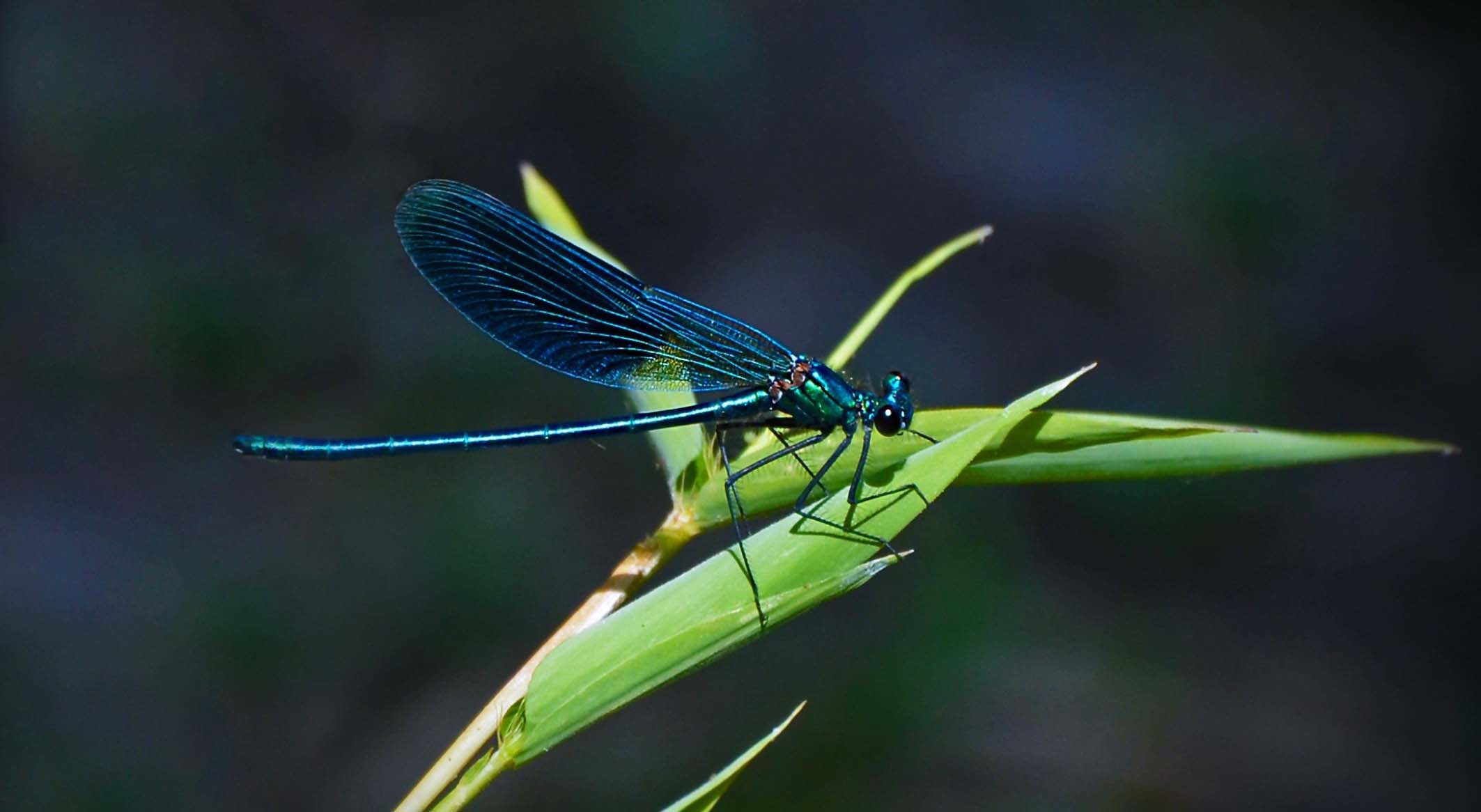WHAT’S GOING ON WITH DRAGONFLIES?
How are pesticides and other global change drivers (climate change, land use intensification, and land use change) affecting odonates (dragonflies and damselflies) at the macroecological scale?
Catherine Sirois-Delisle, a PhD candidate in biology at the University of Ottawa and member at Jeremy Kerr lab, attempted to answer this question in the following study, titled “Climate change aggravates non-target effects of pesticides on dragonflies at macroecological scales.”
Why Odonates?
For Sirois-Delisle, the main reason odonates were selected for her research was due to the fact that “they’re a lot less studied than butterflies or bees. There’s already so much research on bees and butterflies, which is a good thing but I think it’s also a good thing to study under underrepresented groups.”
In the past, data collection has posed problems for those studying macroecology due to lack of abundance and amount spread across large time periods. However, “there’s been a really large digitization effort in alternate collections. So museum records, and citizen science data have really expanded. The fact that they’re digitized means that they’re much easier to use for research.”
As a result, a large portion of Sirois-Deslise’s data was sourced from Global Biodiversity Information Facility and other online databases where the public can contribute to scientific research such as citizen science.In total, she has collected approximately 800,000 observations from across North America.
Research methods
According to Sirois-Delisle, her research involved examining the United States and separating it into 100 by 100 kilometre quadrats. Within those quadrats she observed whether odonates stayed or disappeared in a specific place (persistence). Her goal was to identify the role of three different global change drivers and the interaction between pesticides and climate change.
In essence, “it’s just a series of models, there were six different ones. With these models I could compare them and choose the one that was the most explanatory. The best model ended up being the one with the interactive term; pesticides and temperature.”
She continued, “from there, I could draw different conclusions based on the directions and just the impact of all of these different variables like pesticides, temperature, precipitation, land use, and sampling intensity.”
To clarify, “models one to five, were all based on the global change drivers. The sixth model was specifically looking at range expansions. Meaning that species that can disperse further may be more resilient to climate change impacts.”
What were the results?
When asked about her main research findings, Sirois-Delisle responded, “we found the interaction between pesticides and temperature changes. I think this highlights the importance of using more multi stressor frameworks, when we try to identify risks to global change, rather than looking at the different stressors individually.”
Additionally, “we found that closely related species tend to respond similarly to the drivers that I looked at. This shows that species’ abilities to persist over time, or their propensity to decline could just be based on how closely related they are or their inherited traits could be strong indicators of whether a species will do well or not under climate change.”
The sixth model helped the researcher determine a positive link between a species ability to shift their northern range limit towards higher latitudes with higher rates of persistence. In brief, maybe a species that can disperse and establish further are also more tolerant to environmental change within their current range.
What types of pesticides are being used?
Although Sirois-Delisle is not an expert on the topic of pesticides, she was able to comment, “the main pesticides that are currently used are neonicotinoids. So those are known for being really bad for invertebrates, based on the fact that we know they can bioaccumulate across trophic levels, they also persist in the environment for a really long time.”
It’s largely understood by most scientists that pesticides have far-reaching effects on invertebrates, as well as non-target species by means of spray drift or leaching. This means that pesticides can be found in areas far away from where they were originally applied. This study was able to link odonate species persistence with the application of these pesticides.
What can the public do to best support odonates and invertebrates?
“One really important point, which is gaining popularity, is citizen science. It’s because of just the fact that so many records are available in terms of where like knowing where species are found, it’s really thanks to that information that people like me can do this kind of research,” said Sirois-Delisle
She added, “so anyone from their smartphone can be involved in citizen science. For Odonates, there’s Odonata Central, where you can submit an observation along with a photo of a species that you’ve identified in a specific place.”
Over time, this can help researchers draw conclusions about species persistence or decline as well as other macroecological research topics.
Sirois-Delisle emphasized the importance of increasing the availability of pesticide information. Her initial idea for the paper included Canada and Europe, however, the lack of pesticide information on Government of Canada and other external sites made this route of inquiry impossible to pursue.
This lapse in public knowledge highlights the importance of having pesticide application, quantity, and identifying the location where those pesticides were applied. This information can paint a clearer picture on how these pollutants are affecting biodiversity.






